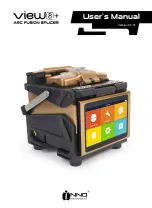
29
LIFT OPERATION SAFETY (CONTINUED)
• ALWAYS
carefully load Vehicle on the Lift. Position
the lift adapters to contact at the Vehicle Manufacturer’s
recommended lift points. Raise lift until adapters contact
vehicle. Check adapters for secure contact with Vehicle.
Raise lift to desired working height. (See Fig.19.1)
• DO NOT
block open or override self-closing lift controls;
they are designed to return to the “Off” or Neutral position
when released.
• DO NOT
remove or disable arm restraints.
• ALWAYS
remain clear of Lift when raising or lowering
Vehicles.
• ALWAYS
use safety stands when removing or installing
heavy components.
•NEVER
go under a raised Vehicle if safety locks are not
engaged.
• NEVER LEAVE LIFT IN ELEVATED CONDITION
unless all Safety Locks are engaged.
• AVOID
excessive rocking of Vehicle while on Lift.
• ALWAYS CLEAR AREA
if Vehicle is in danger of falling.
• ALWAYS REMOVE
tool trays, stands, etc. before
lowering lift.
• ALWAYS RELEASE
Safety Locks before attempting to
lower lift.
•
ALWAYS POSITION
the Lift Arms and Adapters to
provide an unobstructed exit before removing Vehicle from
lift area.
TO RAISE THE LIFT
1. Before Loading: Lift must be fully lowered and service
bay clear of all personnel before the Vehicle is brought on
Lift with the swing arms set to the full drive-thru position.
2. Loading: Swing arms under Vehicle and position
Adapters at Vehicle manufacturer’s recommended Lift
Points. Use height extenders or optional frame-cradle
adapters when necessary to ensure good contact.
(See Fig 19.2 - 19.3)
3. Some vehicles may have the manufacturer's Service
Garage Lift Point locations identified by triangle shape
marks on the undercarriage (reference ANSI/SAE J2184-
1992). Also, there may be a label located on the right front
door jamb area showing specific vehicle lift points.
VISUALLY CONFIRM THAT ALL PRIMARY
SAFETY LOCKS ARE ENGAGED BEFORE
ENTERING WORK AREA. SUSPENSION
COMPONENTS USED ON THIS LIFT ARE
INTENDED TO RAISE AND LOWER LIFT ONLY
AND ARE NOT MEANT TO BE LOAD
HOLDING DEVICES. REMAIN CLEAR OF
ELEVATED LIFT UNLESS VISUAL
CONFIRMATION IS MADE THAT ALL PRIMARY
SAFETY LOCKS ARE FULLY ENGAGED AND THE
LIFT IS LOWERED ONTO THE SAFETY LOCKS,
REFER TO INSTALLATION/OPERATION MANUAL
FOR PROPER SAFETY LOCK PROCEDURES
AND/OR FURTHER INSTRUCTION.
Fig. 19.1
WHEN LOWERING THE LIFT PAY CAREFUL
ATTENTION THAT ALL PERSONNEL AND
OBJECTS ARE KEPT CLEAR. ALWAYS KEEP A
VISUAL LINE OF SITE ON THE LIFT
AT ALL TIMES. ALWAYS MAKE SURE THAT
ALL LOCKS ARE DISENGAGED. IF ONE OF THE
LOCKS INADVERTENTLY LOCKS UPON DESCENT
THE VEHICLE MAY DISMOUNT CAUSING
PERSONAL INJURY OR DEATH.
TO AVOID PERSONAL INJURY AND/OR PROPERTY
DAMAGE, PERMIT ONLY TRAINED PERSONNEL TO
OPERATE LIFT. AFTER REVIEWING THESE
INSTRUCTIONS, PRACTICE USING LIFT CONTROLS
BY RUNNING THE LIFT THROUGH A FEW UNLOADED
CYCLES BEFORE LOADING VEHICLE ON LIFT.
ALWAYS LIFT THE VEHICLE USING ALL
FOUR ADAPTERS.
NEVER
RAISE JUST ONE END,
ONE CORNER, OR ONE SIDE OF VEHICLE.
Summary of Contents for D2-12C
Page 13: ...13 HOSE ROUTING Side of Column...
Page 38: ...38...
Page 39: ...39...
Page 40: ...40...
Page 41: ...41...
Page 42: ...42 42...
Page 43: ...43 43...
Page 44: ...44...
Page 45: ...45...
Page 46: ...46...
Page 47: ...47...
Page 48: ...48...
















































